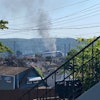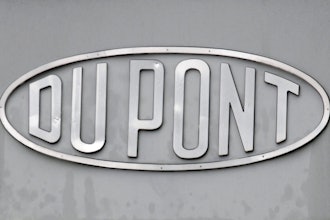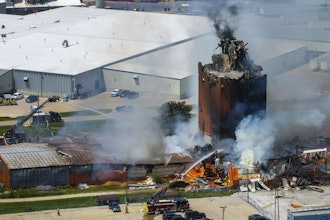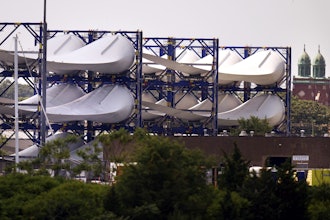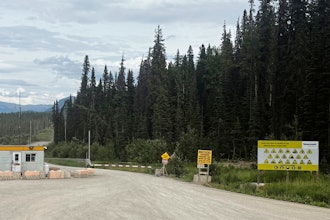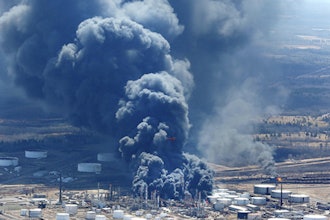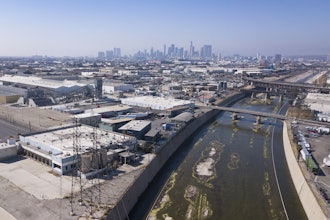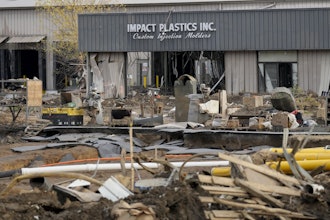
 Erik Fihlman
Erik FihlmanMeat, poultry, seafood, eggs, milk, butter and beans — every food production operation that uses raw ingredients is acutely aware of food safety risks. Managing them requires a comprehensive effort. Risk management practices must reach across the supply and distribution chain, as well as across processing sites. At the plant level, temperature control usually ranks as the first line of defense.
Because the impact of a recall or outbreak to both cost and brand value is high, processors must be vigilant from the moment raw products and ingredients enter their facility until the final product is packaged and shipped. New provisions in the Food Safety Modernization Act (FSMA) require documented hazard analysis and control prevention programs for almost all food products and processing facilities, not just meat and poultry.
There are many reasons why product temperatures can be inadvertently high, beginning with incoming temperatures. Raw products may have been exposed to elevated temperatures during shipment, unloading or in storage. Dry ingredients like flour are often stored in outdoor silos where temperatures can swing daily as well as seasonally. Inside, plants may be climate controlled, but product temperatures can rise between stations and especially in loading and shipping areas. Any time a product is handled, mixed, formed or otherwise worked or processed, heat is added through friction.
Establishing temperature control early is important. Foodborne pathogens can rapidly multiply whenever products are exposed to temperatures above 40o to 50o F — throughout the process and all the way to the consumer’s plate. As a leader in cryogenic solutions for the food industry, we work with plant personnel to review existing food safety programs and examine temperature control at critical points. This includes:
- Reducing product temperature to meet company HACCP plans
- Eliminating the rise in temperature as product is worked
- Reducing temperatures for subsequent processing steps such as forming
Packaging is another point of control where gases can help with temperature control. For products packed in boxes such as poultry, automated box chillers can deliver precise amounts of carbon dioxide (CO2) snow for consistent chilling from box to box. For chilled products in bagged or film-wrapped packages, modified atmosphere packaging (MAP) gases can greatly extend shelf life. Products can change color and spoil prematurely if packages are not properly sealed. And microscopic pinholes in the film can be difficult to detect. New leak detection equipment now makes it possible to sample 100 percent of MAP packages in real time.
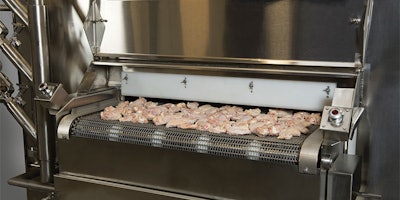 This cryogenic impingement freezer can rapidly lower food temperatures to chill, crust or freeze raw, formed or glazed products with a high level of consistency and yield gain. Hygienic design features further reduce food safety risks. (Photo courtesy of Linde LLC)
This cryogenic impingement freezer can rapidly lower food temperatures to chill, crust or freeze raw, formed or glazed products with a high level of consistency and yield gain. Hygienic design features further reduce food safety risks. (Photo courtesy of Linde LLC)Fringe Benefits
Cryogenic solutions not only help maintain time and temperature requirements, but can positively impact yield and productivity. In fact, these are often the primary reasons for system improvements and upgrades. Food safety can be improved at the same time, and hygienic design is often a deciding factor. It is easy to see why.
Quality Assurance managers work hard to eliminate potential points of contamination. Common sources include human contact, standing water or bacterial impurities from shoveling dry ice or other handling. Hygienic design reduces or eliminates areas inside the equipment that might trap food particles or harbor moisture and bacteria. Of course, automated solutions also reduce human contact.
For example, important elements of hygienic design for inline cryogenic freezers include welded seams, sloped internal surfaces and eliminating potential areas of contamination from above the product zone, such as drip hazards. Ideally, a product should not be exposed to anything other than the track it is riding on and the cryogen — either nitrogen or CO2. Production lines and procedures should also minimize transfers and handling before and after freeze processing.
For chilling products at the mixer/blender, a cryogen injected from the bottom eliminates labor and safety issues involved with loading dry ice from the top of the mixer. Nitrogen bottom-injection systems are now widely used in the meat and poultry industry to achieve significant quality advantages. In keeping with this trend are new hygienically designed injectors that feature a positive shut-off at the blender wall to seal out moisture and food particles. These injectors retrofit to existing mixers so processors can avoid a major capital expense.
Whether cryogenically chilling or freezing, experience in engineering design of temperature control applications, installation and startup of application technology are critical to achieving set parameters for each product. Process monitoring is also critical for consistent operation — and FSMA compliance. The cold truth about food safety is that risks exist regardless of the size of the operation. It is just as important at 500 pounds per hour as it is at 20,000. The good news is that even modest investments can pay off in multiple ways — and help ensure long-term success



